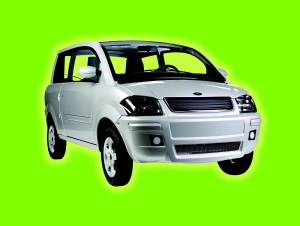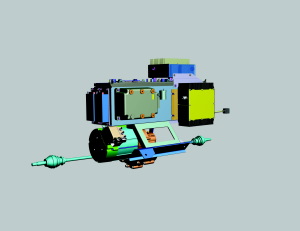
Electric Avenue
By Treena Hein
General Sustainability Automotive electric car sustainable designA revolutionary power storage technology is poised to help Toronto's ZENN Motor Company ride the crest of a new wave of electric vehicles.

Originally published in the April 2008 issue of Design Engineering.
Michael Bergeron has a dream job and he’s enjoying every minute of it. As vice-president of engineering at Toronto-based ZENN Motor Company for the past two years, Bergeron has been happily applying himself to the technical challenges of creating and improving ZENN’s low-speed electric vehicle (EV), one of only a handful of vehicles design and manufactured in Canada.
Now, the eight-year-old company is on the verge of taking its product to the next level. The first step will be integrating a potentially revolutionary technology that could set this small Canadian car company in a class of its own, in an EV market that’s becoming increasingly crowded.
But Bergeron’s team—like everyone else in the automotive world—is waiting for the answer to a rather large question, one that is generating both electric tension in ZENN’s media coverage and serving as the burning source of much automotive and technology blog speculation: Will the capacitor units ZENN hopes to use ever be delivered to the company—and deliver on promises made?
And there’s another million dollar question, which is of course, “When will EVs be for sale in Canada?” Bergeron is currently working on a highway-capable model but the answer to that may be just as challenging.
Wise Use of Resources
The matter, however, of how the ZENN engineering team (five engineers plus support staff) creates their cars is more easily addressed.
“Our concept is one that is very common in the EV business right now,” Bergeron says. “Basically, we work with an automotive firm who provides us a host vehicle. We buy the vehicles without drivetrains and put our drivetrains in.” ZENN’s low-speed platform is provided by Micro Car of England; the new highway platform is currently being chosen.
 The Zenn’s drive train and lead acid batteries produce a top speed of 40 KPH and a vehicle range of 48-80 km.
The Zenn’s drive train and lead acid batteries produce a top speed of 40 KPH and a vehicle range of 48-80 km.Next comes selection of the drivetrain, which Bergeron says is one of the toughest aspects of the whole process, followed by matching the motor with a controller, integrating the other components and performing overall “tuning”—all accomplished digitally.
